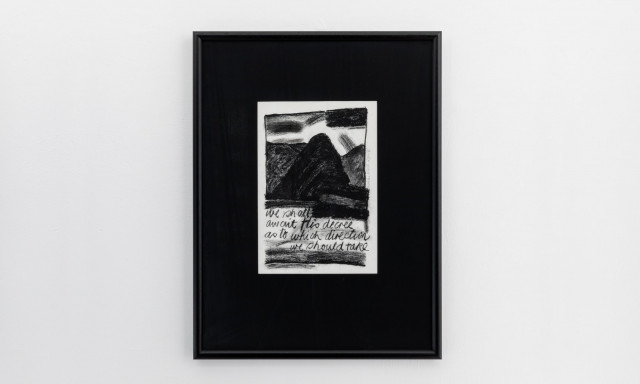About the exhibition
“Be anxiously concerned with the needs of the age ye live in” – Bahá’u’lláh, founder of the Baháʼí Faith
Aio ngaira (this is us) brings together two distinct bodies of work by Robin White – a pair of new large-scale gouache and watercolour paintings, and a series of original charcoal drawings from 1981. Separated by forty years, the works reveal Robin’s ongoing contemplation of culture- and era-defining issues.
In 1981, disturbed by the racist, all-white Springbok rugby tour and harrowing accounts of Baháʼís being persecuted in Iran, Robin began a series of drawings of Dunedin’s Victory Beach. The impermanence and fragility of a tent, paired with the beach setting – a transitional, liminal space representing the threshold between land and sea – meditates on the uncertainty of the situation and the diverging choices forced by these events. Stay, or go? Accept, or protest? Tell the truth, or face persecution?
Inscribed with extracts from The Dawn Breakers, Nabil's narrative of the early history of the Baháʼí faith, the works describe standing at the “parting of the ways” and awaiting a “decree as to which direction to take”.
Now in 2021, during another period of global uncertainty and vulnerability, Robin addresses questions first posed by Paul Gaugin in his 1897 painting Where Do We Come From? What Are We? Where Are We Going?
In the two gouache and watercolour paintings, Robin replies: "aio ngaira"/ "this is us”. She explains: "It can mean all of us, and I like that ambiguity. It's inclusive.”
Based on an idea she had after studying the Charvet and Dufour wallpaper Les Sauvages de la Mer Pacifique at the National Gallery of Australia in the 1990s, Robin’s intention is to answer Gaugin's questions – not with the distant European gaze of the Charvet and Dufour wallpaper, but from within the heart of the Pacific.
Set on the narrow strip of land between the road and the beach of South Tarawa, Kiribati, the paintings depict groupings of people engaged in communal activities – the preparation of a pig for slaughter, discussion of a drunken man’s fate. These ordinary scenes, drawn from memory and imagination, play out against a fragile, bleached landscape. The bright, tropical colours of the Pacific are replaced by a drained palette of ghoulish blue.
Robin describes the works in existential terms - “these paintings caused me to think about the question of "who are we" in relation to the problems of climate change and the implications for atoll dwellers like my friends in Kiribati. The question, and the answer, is a concern of all of us."

Robin White, 2021
Gouache and watercolour on paper, 1400 x 1500 mm

Robin White, 2021
Gouache and watercolour on paper, 1400 x 1500 mm

Robin White, 1981
Charcoal drawing

Robin White, 1981
Charcoal on paper

Robin White, 1981
Charcoal on paper

Robin White, 2021
Charcoal on paper

Robin White, 2021
Charcoal on paper







